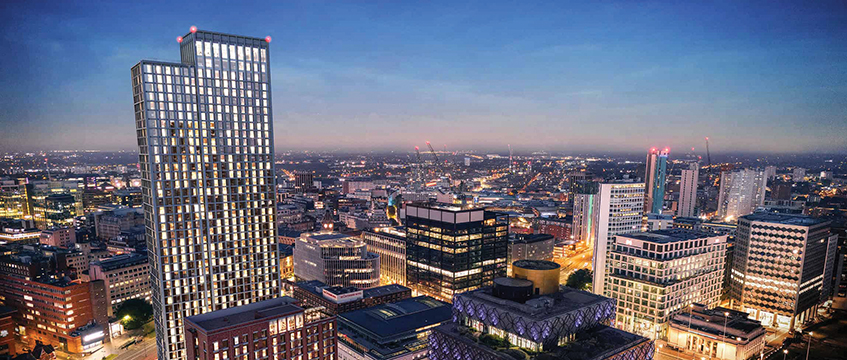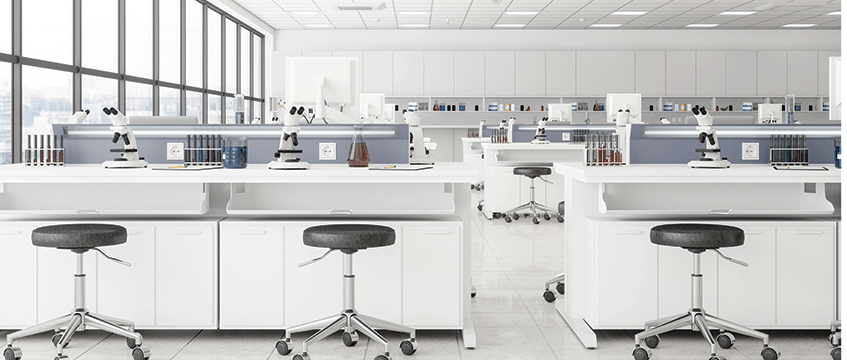Life sciences occupiers’ activity is set to pick up pace in the upcoming months, whilst investment market eagerly awaits greater economic stability, Carter Jonas predicts.
According to the consultancy’s Life Sciences Research Report Spring 2024, the inherent strength of the life sciences sector and ongoing market demand signals a positive outlook for occupiers.
The move comes after the latter part of 2023 saw a decrease in take-up of life sciences-related space, which Carter Jonas largely attributed to a scarcity of high-quality lab facilities and financial pressures on early-stage companies reliant on venture capital.
Change in capital distribution
Carter Jonas data tracked funding secured by businesses in the life sciences sector totalling $7.5bn (£6bn) in 2023, up from $4.6bn funding received in 2022 and the second-highest year for funding on record.
However, there was a dynamic shift in the types of funding they received compared to the previous year, with series A and C rounds dominating the inflow of capital in the sector, suggesting a favourable funding environment for early-stage companies.
In contrast, post-IPO equity funding received by companies totalled just around $160m, which is below the $500m and $1bn received in H2 2022 and H2 2021, respectively.
Similarly, private equity funding, a late-stage round usually led by private equity firms or hedge funds, dropped to nearly zero throughout 2023.
Like the previous two years, funding in the Golden Triangle markets of Oxford, Cambridge and London accounted for most of the investment in 2023, with a combined total of $6.5bn.
Although at a much smaller scale, funding has also been seen across the regions, with Glasgow, Bristol, Manchester and Edinburgh attracting the largest share of the regional clusters.
Addressing lab space shortage
Elsewhere, persistent shortage of laboratory space has catalysed development efforts, with projects underway across both the Golden Triangle markets and regional cities. However, the delivery of these projects has a time lag, with a greater volume of completions anticipated in 2025 and 2026.
Matt Lee, head of science and technology at Carter Jonas, said: “The shortage of lab space has driven development efforts across the key life sciences hubs, with significant projects underway not only in Oxford, Cambridge, and London but also across a number of regional cities.
“While most schemes will not be completed until 2025-26, pre-letting activity is likely to increase.”
Just under 1m sq ft of life science buildings are underway in Oxford, nearly 550,000 sq ft in Cambridge, and around 3m sq ft in London.
Across the Golden Triangle, developments in the pipeline include Trinity by Breakthrough at Oxford Business Park, and One Granta at Granta Park in Cambridge.
In the regions, Citylabs 4.0 is progressing in Manchester and Birmingham Health Innovation Campus is expected to come off the ground soon, with more developments to start over the next year, including UBS Asset Management and Reef Group’s proposed £900m life sciences campus in Hertfordshire, the Upper Brook Street masterplan in Manchester to be delivered by Kadans and Property Alliance Group, and Bruntwood SciTech’s £1.7bn ID Manchester innovation district.
According to Glenigan, there are 162 research and development schemes with plans approved across the UK, with a total value of nearly £8.2bn.
Rents on the rise
Supply demand imbalance has continued to put pressure on rents in most life science clusters across the UK over the past two years.
Rents for fitted labs in London, Oxford and Cambridge are leading the way, reaching £130 per sq ft, £55 per sq ft and £71 per sq ft, respectively.
Rental growth for fitted labs across other established clusters like Manchester and Birmingham have also accelerated, hitting £38 per sq ft and £50 per sq ft, respectively.
In Nottingham, the consultancy tracked rents for fitted labs topping £30 per sq ft, whilst Newcastle and Bristol rents stood at £28 and £24, respectively.
Carter Jonas expects rental levels to continue this growth trajectory in the coming year due to a lack of available stock, construction costs, and continued demand for space.
Dealmakers stay cautious
Turning to real estate investment activity, the market experienced a downturn last year, hurt by successive interest rate hikes and influenced pricing strategies.
Investment volume dropped to £91m from £464m in 2022, and below the 10-year average of £168m.
Notable transactions included the Oxford Science Park’s acquisition of the Hinshelwood Building for £19.4m at the beginning of 2023.
Kadans Science Partner also acquired Sovereign House for £4.8m in the same period.
In the latter part of the year, a joint venture between Brookfield and the UK Atomic Energy Authority and the Science and Technology Facilities Council purchased the long leasehold of Lumen House in Harwell Science and Innovation Camp for £7.65m.
Investment also slowed because many of the global life science developers have secured sites in their target locations and are progressing schemes through design and planning stages, but also due to a lack of opportunities to purchase standing stock.
That said, Carter Jonas expects the investment market to stand still awaiting greater economic stability and the post-peak phase of the interest rate cycle to reignite momentum.
Lee said: “Innovation remains a key focus, and the UK’s life sciences sector is well-positioned for growth with a positive outlook for the future.
“The sector’s resilience, and government support make it an attractive destination for investors and companies. Alongside the leading clusters, other key hubs across the country, including Manchester, Birmingham, Liverpool and Newcastle, are strategically positioned to benefit from these opportunities.”
Photo © Getty Images/iStock from DAM
Send feedback to Evelina Grecenko
Follow Estates Gazette











